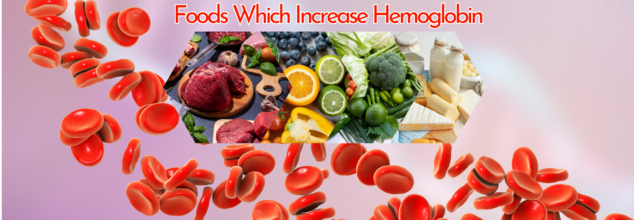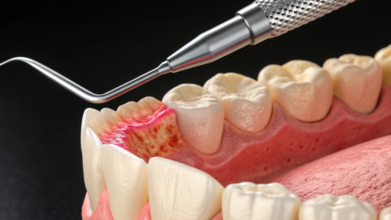- Health Conditions A-Z
- Health & Wellness
- Nutrition
- Fitness
- Health News
- Ayurveda
- Videos
- Medicine A-Z
- Parenting
- Web Stories
How Can I Increase My Hemoglobin Levels Naturally? Foods To Eat For Better Health

Hemoglobin rich foods
Hemoglobin is an iron-rich protein found in red blood cells, responsible for giving blood its red color and performing a crucial function: carrying oxygen from the lungs to every part of the body while transporting carbon dioxide back to the lungs for expulsion. This makes hemoglobin an essential protein for maintaining good health, as it plays a vital role in ensuring the proper functioning of organs and tissues.
Low hemoglobin levels are often linked to anemia, a condition that can lead to a range of health issues. Common symptoms of low hemoglobin include fatigue, dizziness, shortness of breath, headaches, pale skin, and a rapid heart rate. In India, anemia is quite prevalent, especially among women. Normal hemoglobin levels for adult men range from 14 to 18 g/dL, while women should aim for 12 to 16 g/dL. A drop below these levels can signal anemia, making it important to monitor hemoglobin levels and take steps to maintain them.
According to Dr Geeta Buryok, Head of Clinical Nutrition & Dietetics at Max Hospital, Shalimar Bagh, diet plays a significant role in maintaining and improving hemoglobin levels. "Increasing hemoglobin levels naturally can be achieved by including certain foods in your diet that promote red blood cell production. Hemoglobin is an essential protein in red blood cells responsible for carrying oxygen throughout the body, and its production relies on adequate intake of iron, vitamins, and minerals," says Geeta.
Increase Hemoglobin Naturally: Foods to Eat
1. Iron-Rich Foods
Iron is a key component of hemoglobin, and consuming iron-rich foods is essential for increasing hemoglobin levels in the body. Iron helps in the synthesis of hemoglobin and red blood cell production. Foods rich in iron include:
- Animal-Based Sources: Liver, chicken, turkey, fish, and seafood are excellent sources of heme iron, which is easily absorbed by the body.
- Plant-Based Sources: For vegetarians, good sources of non-heme iron include lentils, beans, chickpeas, spinach, tofu, and fortified cereals. However, iron from plant sources is not absorbed as efficiently as iron from animal products. To enhance absorption, it is recommended to pair these foods with vitamin C-rich foods.
2. Vitamin C-Rich Foods
Vitamin C plays a crucial role in improving the absorption of iron from plant-based sources. Adding vitamin C into your diet, you can significantly enhance your body's ability to absorb and use iron for hemoglobin production. Consider adding the following foods to your meals:
- Citrus Fruits: Oranges, strawberries, kiwi, and guava are excellent sources of vitamin C.
- Vegetables: Bell peppers, broccoli, tomatoes, and kale also provide a healthy dose of this essential vitamin.
- Juices and Smoothies: Freshly prepared apple-beetroot-carrot juice or smoothies can be a delicious and healthy way to increase both iron and vitamin C intake, supporting your hemoglobin levels.
3. Folate-Rich Foods
Folate, also known as vitamin B9, is essential for the production of healthy red blood cells. A deficiency in folate can lead to a type of anemia where the body produces large, abnormal red blood cells that do not function properly. To ensure your body has enough folate, incorporate the following foods into your diet:
- Leafy Greens: Spinach, kale, and other dark leafy greens are packed with folate.
- Legumes: Lentils, chickpeas, and black beans are great plant-based sources of this important vitamin.
- Citrus Fruits: Oranges, lemons, and limes are not only rich in vitamin C but also contain folate, making them doubly beneficial for increasing hemoglobin levels.
4. Vitamin B12 and B6
Vitamins B12 and B6 are crucial for red blood cell production and overall hemoglobin function. A deficiency in these vitamins can lead to anemia, so it’s important to ensure your diet contains foods that provide an adequate supply. Some excellent sources of vitamins B12 and B6 include:
- Animal Products: Eggs, dairy products (milk, cheese, yogurt), fish (like salmon and tuna), and poultry provide high levels of vitamin B12.
- Fortified Foods: Some plant-based foods such as fortified cereals, nutritional yeast, and plant-based milk alternatives are enriched with vitamin B12, making them good options for vegetarians and vegans.
- Vitamin B6-Rich Foods: Foods such as bananas, potatoes, chickpeas, and avocados provide vitamin B6, which is essential for the metabolism of proteins and the production of hemoglobin.
Tips for Increasing Hemoglobin
While focusing on your diet is key to increasing hemoglobin naturally, there are a few additional factors to keep in mind. Firstly, maintaining a healthy balance of nutrients is crucial, so avoid excessive intake of calcium, as it can interfere with iron absorption. Secondly, if you are a vegetarian or vegan, consider discussing iron supplements with your healthcare provider, as plant-based iron sources may not always meet your body’s requirements. Lastly, regular exercise can improve overall blood circulation and oxygen supply, supporting healthy hemoglobin levels.
Maintaining healthy hemoglobin levels is essential for overall well-being, as hemoglobin plays a pivotal role in delivering oxygen to all parts of the body. Low hemoglobin can lead to anemia, which causes a range of symptoms including fatigue, dizziness, and shortness of breath. To increase hemoglobin naturally, focus on incorporating iron-rich foods, vitamin C, folate, and vitamins B12 and B6 into your diet. By doing so, you can promote red blood cell production and ensure that your body functions efficiently.
If you suspect that you have low hemoglobin levels, it’s important to get a complete blood count (CBC) test and consult with a healthcare provider for further advice on dietary adjustments or supplements. A balanced diet, along with the right nutrients, can help you maintain optimal hemoglobin levels and support a healthier, more energetic life.
Matcha Could Be Messing With Your Iron Levels, According To Doctor

Credits: Canva and Instagram
"Yep, that's me. You're probably wondering how I ended up in this situation," is how the video opens up with a girl sitting in the ER getting IV drips. The reason? Her obsession Matcha.
"If you drink a lot of matcha, you probably need to know this," says the US-based surgeon and education Dr Karan Rajan while reacting on the video.
Matcha may be the Instagram-famous, antioxidant-packed drink of the decade, but sipping too much of it could come at a hidden cost—your body’s iron levels. In a recent video, Dr Rajan explained how heavy matcha consumption can interfere with iron absorption, potentially leading to iron deficiency anemia over time.
“Polyphenols like EGCG in moderate amounts have antioxidant and anti-inflammatory effects,” Dr. Rajan said. “But at very high cumulative doses, like several cups of matcha a day, these compounds can bind to non-haem iron in the gut and reduce iron absorption.”
According to him, clinical studies show that polyphenol-rich drinks like teas can reduce iron absorption by as much as 60–70% when consumed alongside iron-rich meals. While animal-based “heme iron” is less affected, plant-based “non-heme iron” is far more vulnerable. This means that women of reproductive age, vegans, or those with borderline iron levels could be particularly at risk.
His advice? Keep matcha away from meals. “If drinking matcha is your personality, make sure you drink it between meals, not with them,” he warned.
A Real Case: Green Tea and Iron Deficiency Anemia
Dr. Rajan’s caution is not without evidence. A striking case study published in Clinical Case Reports in 2016 detailed how long-term green tea consumption caused severe iron deficiency anemia in a 48-year-old businessman.
The patient, who had a two-decade habit of drinking over 1.5 liters of green tea every weekday, developed persistent fatigue and anemia. Initial blood tests revealed extremely low iron markers: ferritin at just 1.6 ng/mL (far below normal) and hemoglobin at 6.2 g/dL. Despite oral iron supplements, his hemoglobin levels only improved after he stopped tea consumption.
But when he resumed his green tea habit, the anemia returned—even though he continued taking iron supplements. Doctors confirmed a “rechallenge effect,” showing that green tea directly blocked iron absorption. His condition improved again when he switched to intravenous iron therapy and reduced his tea intake.
The report concluded:
“Our patient’s case further confirms the relationship between tea and reduced iron absorption, not only by the improvement of iron deficiency anemia following abstinence from tea, but also by the recurrence of anemia upon a rechallenge of tea during continuous oral iron supplementation.”
This case underlines how powerful tea’s impact on iron can be—not just in theory, but in real life.
The Science Behind Matcha and Iron
So why does matcha, or green tea in general, interfere with iron absorption? The answer lies in its polyphenols, tannins, and oxalates—natural plant compounds that easily bind to iron molecules.
Matcha.com explains: “Research suggests that oxalates and tannins are some of the naturally occurring green tea compounds studied to impact iron absorption. Specifically, these compounds bind with non-heme iron in plant foods such as beans, peas, leafy green vegetables, and nuts.”
When this happens, the body absorbs less iron, and even the beneficial effects of matcha’s antioxidants may be reduced. For instance, epigallocatechin gallate (EGCG)—a major catechin in matcha—normally inhibits inflammation. But studies suggest that when EGCG binds with iron, it loses much of this protective power.
In other words, not only does matcha block iron from being absorbed, but iron also blocks some of matcha’s health benefits.
The One-Hour Rule: A Practical Solution
This doesn’t mean you need to ditch your daily matcha latte. Instead, experts suggest timing is everything.
“By simply spacing out the consumption of matcha from your iron-rich meals, you will be able to reap the healthful benefits of both,” notes Matcha.com. The general guideline is to wait at least one hour after eating an iron-rich meal or taking an iron supplement before drinking green tea or matcha.
Dr. Rajan echoed a similar sentiment in his video: keep your matcha habit separate from meals to reduce the risk of interfering with nutrient absorption.
Who Should Be More Cautious?
While the average person drinking one or two cups a day is unlikely to face serious issues, some groups may need to be extra mindful:
- Women of reproductive age – due to monthly blood loss, iron deficiency risk is already higher.
- Vegans and vegetarians – since their iron primarily comes from non-heme sources, which are more affected by tea polyphenols.
- Individuals with borderline or existing anemia – especially if fatigue and weakness are already present.
- Heavy matcha or tea drinkers – those consuming several cups daily could unknowingly drift into deficiency.
The 2016 case report also highlighted that cultural and lifestyle habits—like drinking tea throughout the workday—can exacerbate the problem.
Matcha: A Double-Edged Sword
It’s important to stress that matcha isn’t “bad.” In fact, research highlights its many benefits, from reducing inflammation to lowering risk of diabetes and stroke. The 2015 Dutch Dietary Guidelines even recommended drinking three cups of tea daily for long-term health.
But like most things, balance matters. As the case report authors concluded, excessive tea consumption should not be overlooked as a potential cause of iron deficiency.
Dr. Rajan summed it up best with a dose of humor:
“If you’re drinking so much matcha it’s likely becoming a part of your blood volume and you’re constantly feeling wiped out, ask your doctor about ferritin and iron studies.”
Morning Coffee Benefits: Is That First Cup Helping You Or Secretly Harming Your Health? Find Out

Credits: Canva
Picture this: it’s a new morning, your alarm is blaring, and the world outside your blanket feels like a cold, unwelcoming place. You need to get ready for work, but there’s only one thing that can get you out of bed, coffee.
What may surprise you is that your daily cup of joe doesn’t just wake you up. When enjoyed in the morning, even on an empty stomach, it can offer a range of health benefits. So before you reach for breakfast, let’s look at why that first sip of coffee might be exactly what your body needs.
Morning Coffee: Is It Good or Bad for Your Health?
If you enjoy your coffee first thing in the morning, there may be more benefits to that habit than just feeling awake. Research published in the European Heart Journal found that people who drank coffee mainly in the morning had a lower overall risk of death and a reduced risk of dying from cardiovascular disease compared with those who drank coffee throughout the day.
The study, led by Dr. Lu Qi of Tulane University in New Orleans, also noted that coffee doesn’t appear to raise the risk of cardiovascular disease. In fact, previous research has linked it to a lower risk of certain chronic illnesses, including type 2 diabetes.
The January 2025 paper highlighted a striking finding, those who drank coffee before noon had a 16% lower risk of death from any cause and a 31% lower risk of death from heart disease compared with people who didn’t drink coffee at all.
ALSO READ: Your Morning Coffee Could Help Lower Your Risk Of Heart Diseases
But why does timing matter? In the morning, the body naturally experiences a surge in sympathetic activity, the system that helps us wake up and feel alert. This effect tapers off during the day and is at its lowest during sleep. Drinking coffee late in the day can interfere with this rhythm, often leading to sleep problems. Coffee is also known to suppress melatonin, the hormone that signals the brain when it’s time to rest, which may explain why afternoon or evening cups can be bad for your health.
How Much Coffee Is Safe for Women to Drink Each Day?
Even something as enjoyable as coffee can be too much of a good thing. Drinking too much caffeinated coffee can make you feel jittery and may cause:
- Increased heart rate
- Raised blood pressure
- Anxiety
- Trouble falling asleep
Pregnant or breastfeeding? The rules change. It’s best to check with your doctor before adding caffeine to your diet. And if coffee tends to make you jittery, remember that caffeine tolerance differs from person to person. Even one cup a day or decaf can offer some of the potential health perks.
ALSO READ: ICMR Flags Misuse Of Critical Drugs, Suggests New Antibiotics Be Sold Only In Hospitals
While coffee is a delightful part of your routine, other factors like a balanced diet, regular exercise, and maintaining a healthy weight have a bigger impact on overall health. Enjoying your cup of coffee can complement these habits, making it a simple addition to a healthy lifestyle.
Mediterranean Diet Can Help You Get Healthier Gums

Credits: Canva
A new study published in the Journal of Periodontology highlights that people in the UK who follow a Mediterranean-style diet may enjoy better gum health and lower levels of gum disease. Conducted by researchers at King’s College London, the findings show a link between diet, inflammation, and periodontal disease severity.
What the Study Found
The research evaluated 200 hospital patients who were part of the King’s College London Oral, Dental and Craniofacial Biobank. Participants underwent dental examinations, provided blood samples, and completed detailed dietary questionnaires.
The analysis revealed that individuals whose diets resembled the Mediterranean pattern, rich in legumes, vegetables, fruits, and olive oil, had lower levels of gum disease and systemic inflammation. On the other hand, patients who consumed diets high in red meat and deviated from the Mediterranean model were more likely to present with severe gum disease.
Researchers also measured circulating inflammatory markers. People with less healthy diets showed higher levels of Interleukin-6 (IL-6) and C-reactive protein (CRP), both indicators of systemic inflammation. In contrast, those following a plant-rich diet had lower levels of these markers.
Why the Mediterranean Diet Matters
The Mediterranean diet is widely recognized for its emphasis on whole, nutrient-dense foods such as fruits, vegetables, legumes, whole grains, nuts, and healthy fats like olive oil. It has already been associated with a reduced risk of major chronic illnesses, including heart disease, certain cancers, and neurodegenerative disorders.
According to the researchers, diet plays a significant role in human health by influencing the immune system and inflammation. This effect largely depends on the types of molecules present in food, including macronutrients, micronutrients, and phytochemicals. Plant-based diets are often rich in these components, which may contribute to reduced inflammation throughout the body.
Implications for Gum Disease
The study’s findings add weight to the idea that gum disease should not only be treated with dental procedures but also considered in the broader context of lifestyle and diet.
Dr. Giuseppe Mainas, first author of the study and postdoctoral researcher at King’s College London, noted:
“Our findings suggest that a balanced, Mediterranean-type diet could potentially reduce gum disease and systemic inflammation. We observed that there may be a connection between periodontal disease severity, diet, and inflammation. These aspects should be holistically considered when assessing treatment for periodontitis in patients.”
A Step Toward Better Oral Health
Professor Luigi Nibali, lead author and Professor of Periodontology at King’s College London, emphasized the growing importance of nutrition in dental health.
“There is emerging evidence about the role that a balanced diet might have in maintaining a periodontal healthy status. Our research shows the potential effect that a nutrient-dense, plant-rich diet could play in improving the nation’s gum health. Nevertheless, more investigation is needed to develop personalized approaches to help people manage their gum health,” he said.
The research is an important step in understanding how dietary choices affect oral and systemic health. While more studies are needed to confirm the long-term effects and create practical dietary guidelines for gum health, the message is clear: what we eat may directly influence not just our heart and brain, but also the health of our gums.
© 2024 Bennett, Coleman & Company Limited

